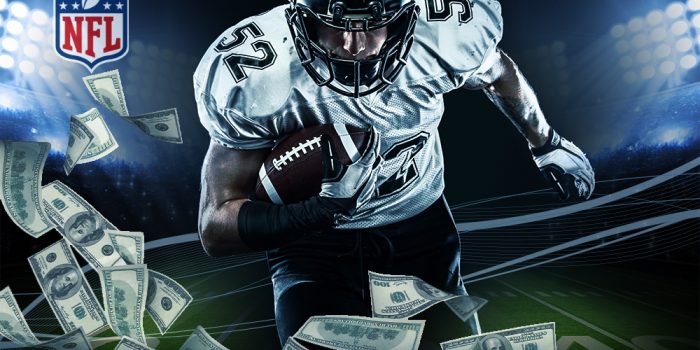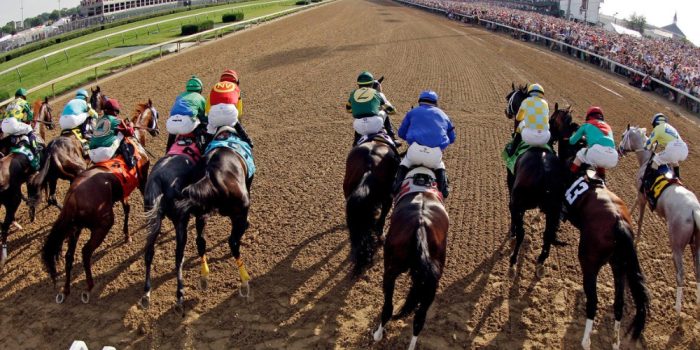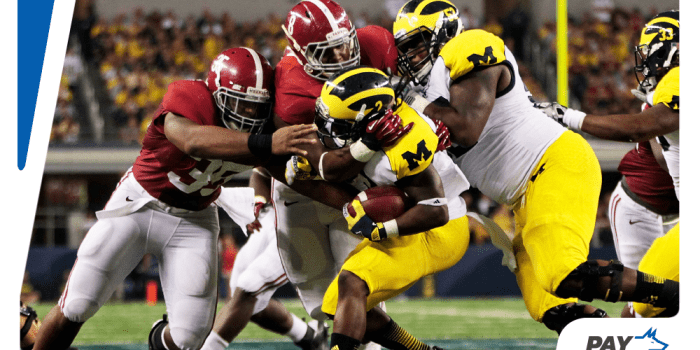Bookmakers that provide free betting software make money from different types of wagers. The most popular in the United States is betting for or against a line. Check out how line betting differs among sports and see why American bookie agents rely so much on line betting action.
Although the overall betting handle for Super Bowl LV has yet to be released, most agree that worldwide betting on the game between the Kansas City Chiefs and Tampa Bay Buccaneers surpassed $7 billion. The greatest player of all time, Tom Brady, led the Buccaneers to a 31-9 win over the current best player in the NFL, Patrick Mahomes, and the Chiefs.
A game of that magnitude had to have garnered the most action in Super Bowl history. When the final numbers arrive, a couple of things will stand out. First, betting through individual bookmakers, those that run their sportsbooks with bookie software, accounted for more of the overall total than anyone had predicted.
The second thing that will stand out is how much of a percentage against the spread, or line betting, accounted for the total. Spread betting is the wager of choice for most U.S. professional gamblers.
A professional gambler named Mattress Mack placed a $3.46 million Super Bowl LV wager on the Tampa Bay Buccaneers at +3.5. Mack’s wager landed a few days after a few $1 million-plus bets had landed on the Kansas City Chiefs at -3.
Most players don’t call bookie agents looking to place a seven-figure bet. Heck, it’s rare to find a player who bets more than $1,000. It’s even rarer to find a player that bets $5,000 or $10,000 on a single game.
But although you won’t come close to attracting action like Mattress Mack’s Tampa bet, your players will make ATS or moneyline wagers. Most of their stakes will be line bets, which is why you should keep reading to brush up on your line betting knowledge.
Line betting explained
Before explaining line betting, we should answer a couple of questions. The first question is, “What is a bookie?” The second question is, “How do bookies make money?”
If you think you know the answer to the first question, the real answer may surprise you. Bookies provide wagering services. For some of those services, they charge a fee.
We see the answer to the second question in the response to the first question. Bookies make money by pocketing fees. Bookmakers keep charged fees from line betting options.
Here’s another question, “Why are ATS bets the most popular bets in the United States?”
The answer to the question is, “ATS bets are the most popular in the United States because the sportsbook industry makes money off against the spread wagers.” Doesn’t it make sense to push the bets on which you charge fees?
Whether we call it handicap betting, against the spread wagering, run line, or puck line betting, it’s the same thing. Betting with lines involves a team offering points, runs, or goals for a price. The other team gets points, runs, or goals for a price. Sometimes, the players must pay juice on the team getting points. Sometimes, the bookie fee is on the team giving up points.
Below, we provide examples of against the spread and handicap line betting. Save this blog and refer to it when players call with questions.
NFL, NBA, College Football, and College Basketball against the spread betting
The National Basketball Association and the National Football League are the U.S.’s two most popular sports leagues. Against the spread betting is the same for both. The following betting line could be for a football or basketball game.
- Los Angeles -6 ½ (-110)
- New York +6 ½ (-110)
Notice how both teams are at -110? The -110 is a vital distinction between football and basketball bets on lines and soccer handicap, puck line, and run line wagering.
For most American football and basketball bets, both teams are at -110. The odds mean that if a player wants to make $100 betting on either team, they must risk $110. The 6 ½ is the point spread.
The point spread tells whether the team a sports bettors likes must cover or beat the spread. Nowadays, we use the word “cover” to mean teams laying points, like Los Angeles at -6 ½, or teams receiving points, like New York +6 ½.
If Los Angeles beats New York by at least 7 points, we say, “Los Angeles covered the spread against New York.” If New York loses to Los Angeles by 6 points or less, we say, “New York covered the spread against Los Angeles.”
No matter if a player bets on New York or Los Angeles, they get $100 of their investment back if they win their wager. The sportsbook owner keeps the $10—the $10 is their bookmaking fee. We can also call the bookie fee “juice” or “the vig” or “vigorish.”
If the bet wins, the bookie must make a $100 payout. If their wager is a loser, the player pays the entire amount they bet to the bookie. The bookmaker can ensure they keep fees by using their layoff account.
Let’s say a player bet $110 on Los Angeles. The bookie can make the same $100 bet on Los Angeles in their layoff account. If the bet wins, the sportsbook operator pays the player with their layoff account winnings. If the bet loses, the bookmaker pays their layoff account with the player’s losses.
Soccer handicap betting, the hockey puck line, and baseball’s run line
Soccer betting is similar. But we don’t use the terms ATS or against the spread on soccer bets. Instead, we call it a handicap line.
- Bayern -2 (-140)
- Mainz +2 (+125)
Look for the difference between soccer handicap betting and an ATS wager on football or basketball. With the soccer bet, the much better team, Bayern, must offer goals and requires a fee.
What is the reason why soccer handicap line betting is different? Football teams get 6 points for every touchdown. Basketball teams get 2 points for every score. Sometimes, a hoops squad can get 3 points for a basket.
Scores are high in football and basketball. Goals are hard to come by in soccer, so players who back the superior squad must sometimes also pay a fee.
Hockey puck line and baseball run line betting are similar to soccer handicaps. It isn’t easy to score goals in hockey. It’s also difficult to score runs in baseball, which is why NHL and MLB sports bettors must pay attention to the odds following the line.
Create a full gambling website with PayPerHead sportsbook software
Line betting options will be your most popular wagers. Be thankful for that. You can ensure you pocket ATS, soccer handicapping, and hockey puck line or baseball run line fees with the layoff account.
It would be best if you didn’t lean exclusively on line betting, though. Adding a casino and racebook will significantly boost your sportsbook’s revenue. If you add prime digital platforms, like Premium Props and Live+, you can increase action by 15% or more. Some agents who have added PayPerHead premium platforms have seen their action rise to 30% or more.
Import players soon so that you pay just $4 per head until April 5. The deal includes all premium platforms, the layoff account, and the Agent Payment Solution (APS®). Via the APS, you can make payments and collect online.





